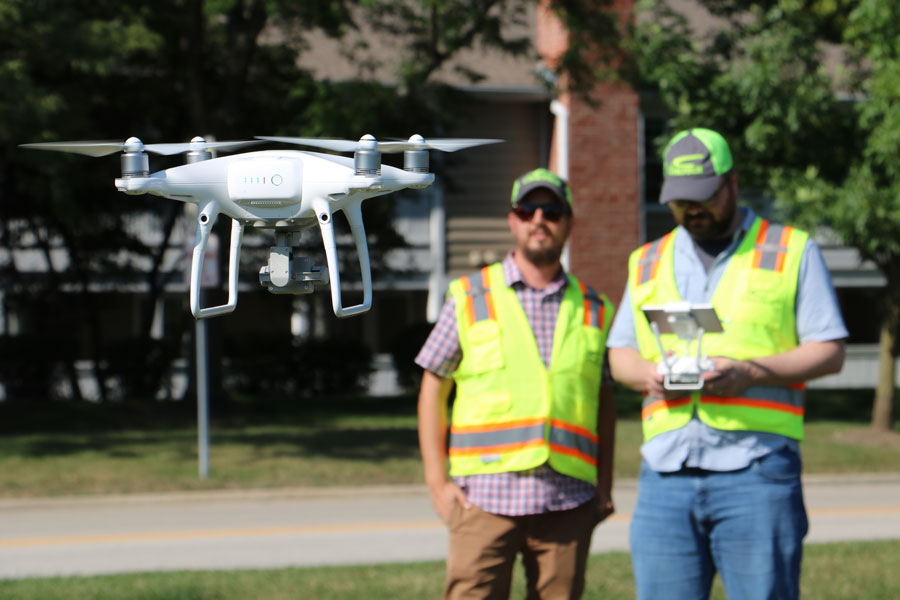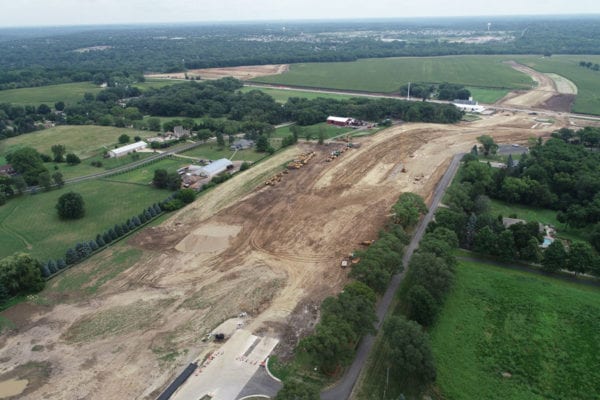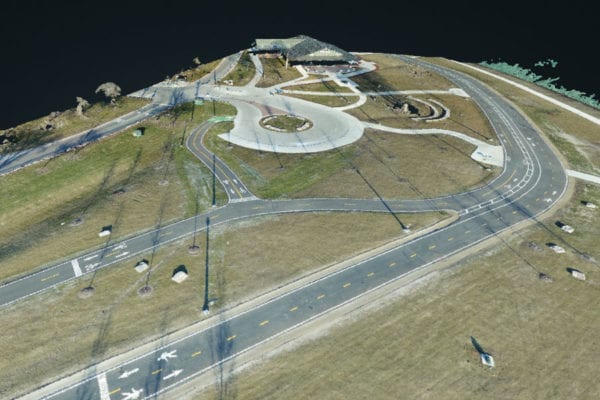
One evening in 2012, Civiltech’s Adam Wuellner settled in to watch the sci-fi film, Prometheus. A scene where the crew of the spaceship Prometheus unleashes small, spherical “pups” to explore the network of tunnels on an alien planet which allowed the crew to construct a 3D model of the cavern seized Adam’s imagination and interest.
. . . And from that inspiration, Civiltech’s concept of a drone program was born.
Adam researched further and learned that drone technology was already starting to be used for mapping and photography. He began discussing the idea with coworkers, and Civiltech began to entertain the idea of drone usage and opportunities. At that time, however, federal regulations on drones were prohibitive, and the idea remained just an idea.
Four years later, drones were becoming more prevalent in society. Once relegated to hobbyists who constructed their own multicopters, ready-to-fly models were now available. The FAA had been ordered by Congress to integrate unmanned aircraft systems (UAS) into the national airspace. The Department of Transportation published the “Small UAS” rule, also known as Part 107, which provided the first national, uniform guidelines for commercial operation of unmanned aircraft systems under 55 pounds. With these new regulations and after some initial test flights with John Breitsameter and his personal drone, Civiltech’s drone program took flight.
The Crew
Three members of the Civiltech team chose to obtain commercial drone licenses. Adam was an enthusiastic participant due to his initial interest and research. Ernest Williams, a field technician in Civiltech’s Chicago office, already had experience flying drones and was interested in how they could be utilized for construction documentation. Eric Hodek, Civiltech’s graphic designer, chose to participate for the photographic opportunities. He was excited with the idea that a drone essentially provided a “400 foot ladder.”
To earn their wings, the team participated in a pilot exam prep course through the Northwestern Center for Public Safety. Each then took the exam, and all three are now licensed to fly drones up to 55 pounds. After receiving their licenses, Adam and Eric still had to learn how to fly. However, Adam stated that it wasn’t difficult to master, since the controls are intuitive and similar to video games. Also, Civiltech’s drone has obstacle avoidance and GPS, making flight incredibly stable. Eric and Ernest also took a drone photography class. Eric enjoys capturing a variety of perspectives only available through the use of a drone. He states, “You can get a really cool perspective, even at 25 feet.”
The Program
Currently, Civiltech’s drone is primarily used for photography and marketing purposes, such as studying the existing conditions of a potential project or capturing a background for a rendering. Also, completed projects can be photographed and documented. This is especially beneficial on large infrastructure projects where new geometrics are far easier to visualize from a birds-eye view.
The Civiltech team is actively exploring potential future uses such as surveying and creating deliverables like 3D models, topographic drawings, or 2D maps. Drones allow Civiltech to do aerial mapping, with overall images created by mosaics that are geo-referenced and accurately placed, in some cases replacing the need to hire photogrammetrists. Aerial images can be continuously updated at very low cost, keeping maps current.
The sudden ability to quickly collect photographs of a construction site and process them into seamless orthomosaics and 3D surface models has caught the attention of Civiltech’s Construction Engineering department, too. A pilot program is underway to monitor one of our larger construction projects, gathering bimonthly data to evaluate its fitness for a variety of purposes.
Overcoming Challenges
One of the primary challenges the team has had to overcome is the prohibition from flying inside controlled airspace. With the majority of our clients in the Chicago region, project sites are often very near an airport surrounded by controlled airspace. Eric explains that before going out for a photo shoot, he researches the area he wants to photograph, selects launch sites, and reviews obstacles. Project sites can often include a road, bridge, or intersection in a busy area. However, regulations prohibit flying directly over people or live traffic. Our drone pilots must exercise caution when determining when and where to fly the drone.
The drone can be difficult to see, since it is small, white, and up to 400 feet in the air. Regulations state that the drone must remain in the visual line of sight of the operator at all times. Since the pilot needs to look back and forth between the drone and its controls, a second set of eyes acting as a visual observer often comes in handy.
Lastly, drone piloting sometimes attracts unexpected or unwanted attention. Eric found himself in a question and answer session with a group of grandparents who were unsure of the device. Unlike their grandkids, who knew exactly what it was. Adam once found himself answering to a security guard at a steel mill concerned about his activities and intentions.
Exciting Outcomes
While Civiltech continues to grow the drone program and explore its potential uses, we have already enjoyed exciting successes. As part of our ongoing North Lake Shore Drive Phase I study, we are able to monitor changes within the project limits, such as the renovations to the Theater on the Lake at Fullerton Avenue. Also, the drone photography has provided the opportunity to create exciting graphics for marketing proposals. Our drone program is also beneficial for community outreach. The Transportation Research Board of the FHWA had previously identified that birds-eye views are more effective at communicating improvements to the public than ground views.
Civiltech and Technology
But photography, mapping, 3D-modeling, and construction monitoring aside, drones are fun! On Take Your Child To Work Day last April, Civiltech enjoyed watching our little guests fly drones up and down our hallways. When all these little engineers grow up, drones will be commonplace or already replaced by some new, exciting technology, like the pups in Prometheus. But for now, Civiltech strives to remain on the cutting edge of technology, exploring all the ways our drone program can be beneficial to our clients.

